For THE BIGGEST Leaves, Grow Petasites japonicus, Japanese Butterbur
Since living in England, I’ve wanted to grow Gunnera. The huge leaved plants are often found planted next to bucolic ponds or in other dramatic settings at all the famous gardens across the UK. They are otherworldly. Gunnera’s GIANT leaves can make full-sized adults feel like they have fallen into Alice’s Wonderland. Unfortunately, Gunnera will not survive in New England, so with disappointment, I gave up on the idea of an oversized garden to make us feel enclosed and ensconced in a beautiful lush plant world – until I discovered Petasites japonicus (Japanese sweet coltsfoot or butterbur).
Butterbur – The Inspiration:
Around 2010, I spotted Butterbur on Deborah Silver’s Blog Dirt Simple (which is still great and always worth a visit) — she was talking about Butterbur (Petasites hybridus), which is actually a native of Massachusetts (where I live) and Michigan (where Deb lives).
She has it planted in her own garden (see below), where its leaves are big and covetous.
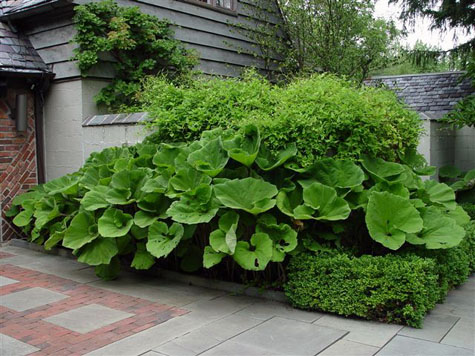
Deb Silver’s Butterbur and Boxwood
Planted with smaller leved plants in front of the house, there giant plants with giant leaves give so much textural contrast that no flowers are required to keep the view interesting. image from Dirt Simple.
Butterburr is a plant that can give you ‘vegetation disorientation’. (I know this sounds so legitimately clinical, but we just made it up. I define it as plants or wildlife, so it’s weird you can’t orientate yourself.)
My husband and I encountered butterbur in the wild on a remote island in Sweden, and it was disorienting. We thought they were strange giant wild rhubarb. Combined with the giant oily black slugs, we could have just as easily been delivered to that island by a spaceship rather than a quaint ferry.

Before I acquired the Japanese variety of butterbur, I actually found some of the native variety in a friend’s garden. There, it was growing in a boggy area (it is also commonly called bog rhubarb). My friend was hesitant to pass it along since it was quite aggressive in this rich, wet environment.
It seems that no matter which variety you choose for your garden, This is your warning – that it can be aggressive – plan and plant accordingly. A bamboo grower suggested that I try a mulch-filled trench (that can be seasonally dredged). I’ve opted instead to use natural barriers (like rock walls, driveways, foundations, patios and lawns. As they encroach on the grass, I just mow them down – so far, so good. It has been a couple of years now – and so far, so good – but update if conditions change.
Butterbur (*Petasites*): A Garden Overview
Butterbur, known botanically as *Petasites*, is a fascinating plant with a rich history, various uses, and a unique presence in the garden. Here’s an overview so you can talk intelligently about it when your neighbors inevitably ask you about it.
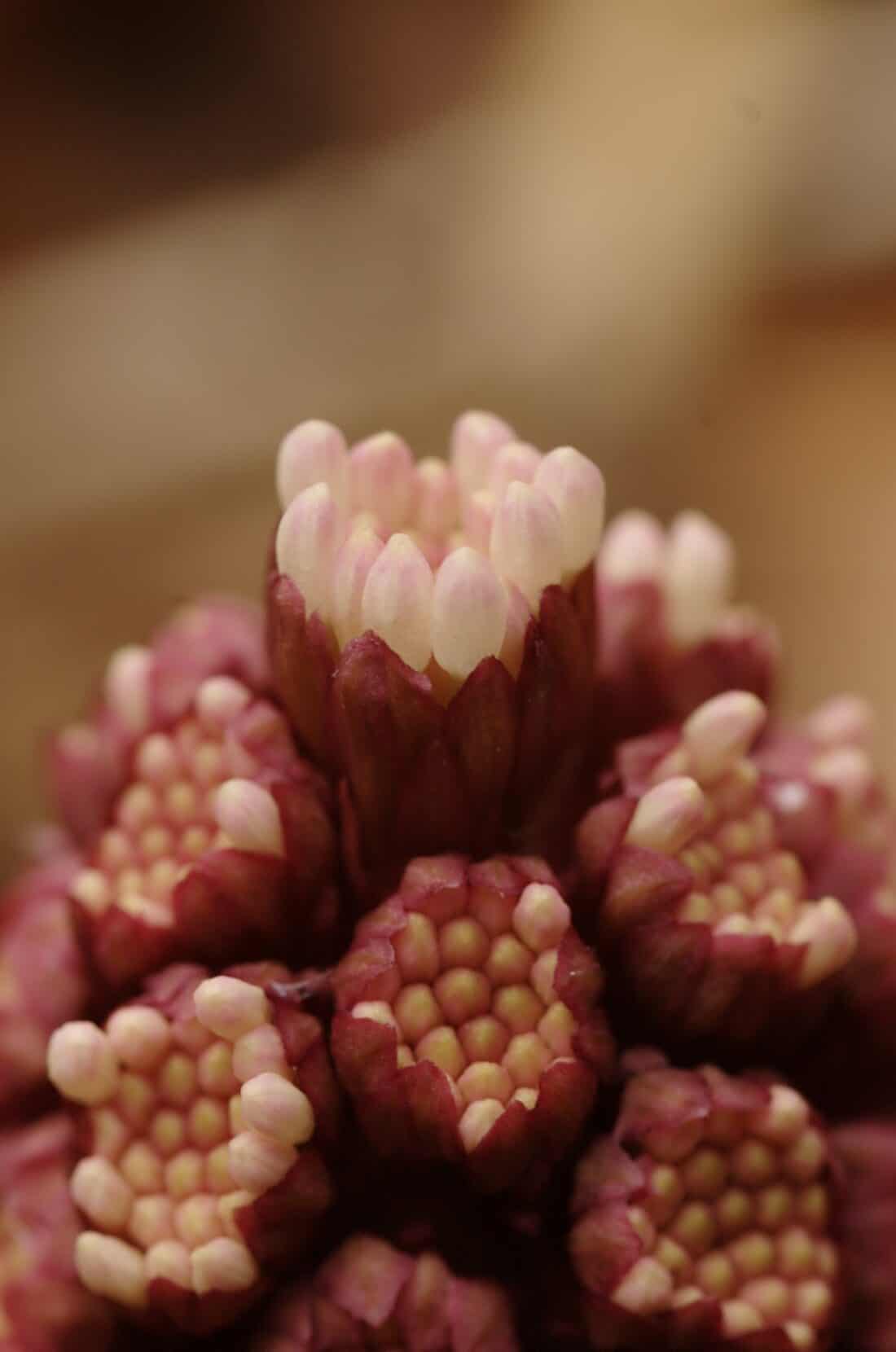
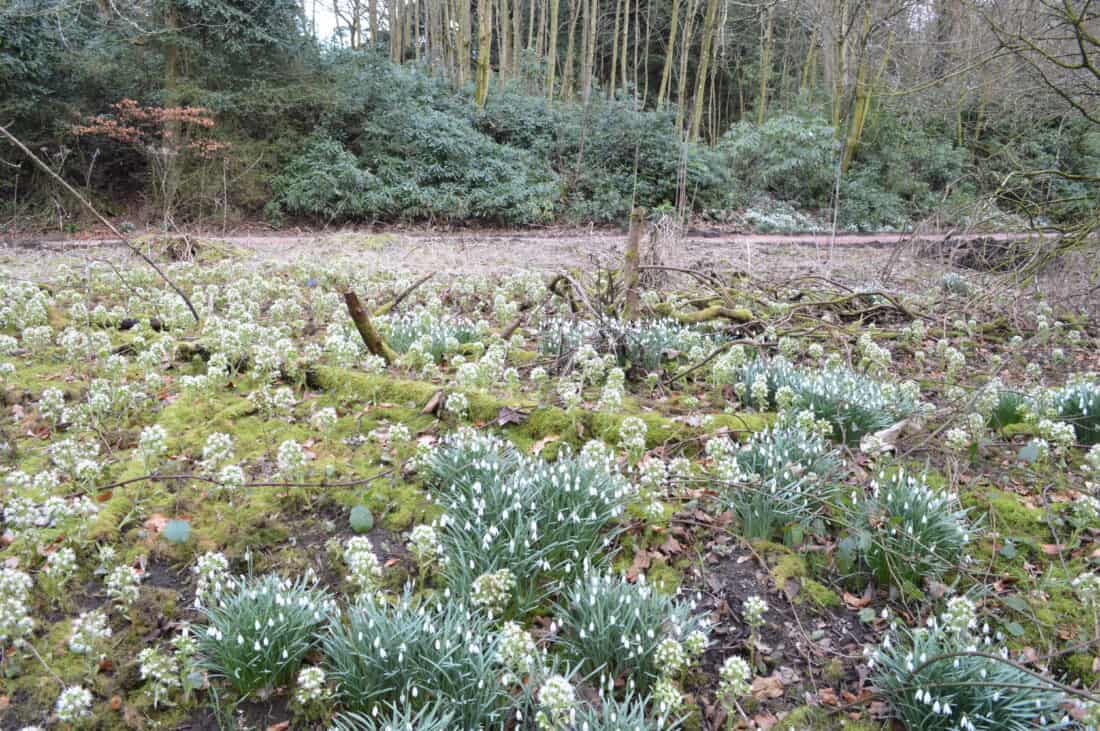
But the native and the Japanese butterbur plants emerge like strange extraterrestrial plants in the very early spring. These late winter flower buds have clusters of flowers that look a little like fuzzy native asters when they open. These blooms will quickly die back, and then the real show begins. Huge leaves will spring forth (seemingly overnight) in wet soil, and the giant butterbur plant will be the greenest thing in your landscape, arriving before most woody plants have a full set of leaves.
Lore and History of Petasites
Butterbur has been around for centuries and is often associated with medicinal uses. The ancient Greeks and Romans used butterbur leaves to wrap butter, keeping it cool and fresh—hence the name.
During the Middle Ages, it was used to treat plague and fever, earning it a reputation as a plant with healing powers. In traditional herbal medicine, butterbur is known for its anti-inflammatory and pain-relieving properties.
I’ve never experimented with it medicinally, and I offer no advice, but if you grow the plant, you will likely have plenty if you like to experiment with home remedies.
In Japan, the young shoots of Petasites japonicus, which are called fuki, are used in various dishes. I need to research this a bit more – I have plenty that I can harvest…
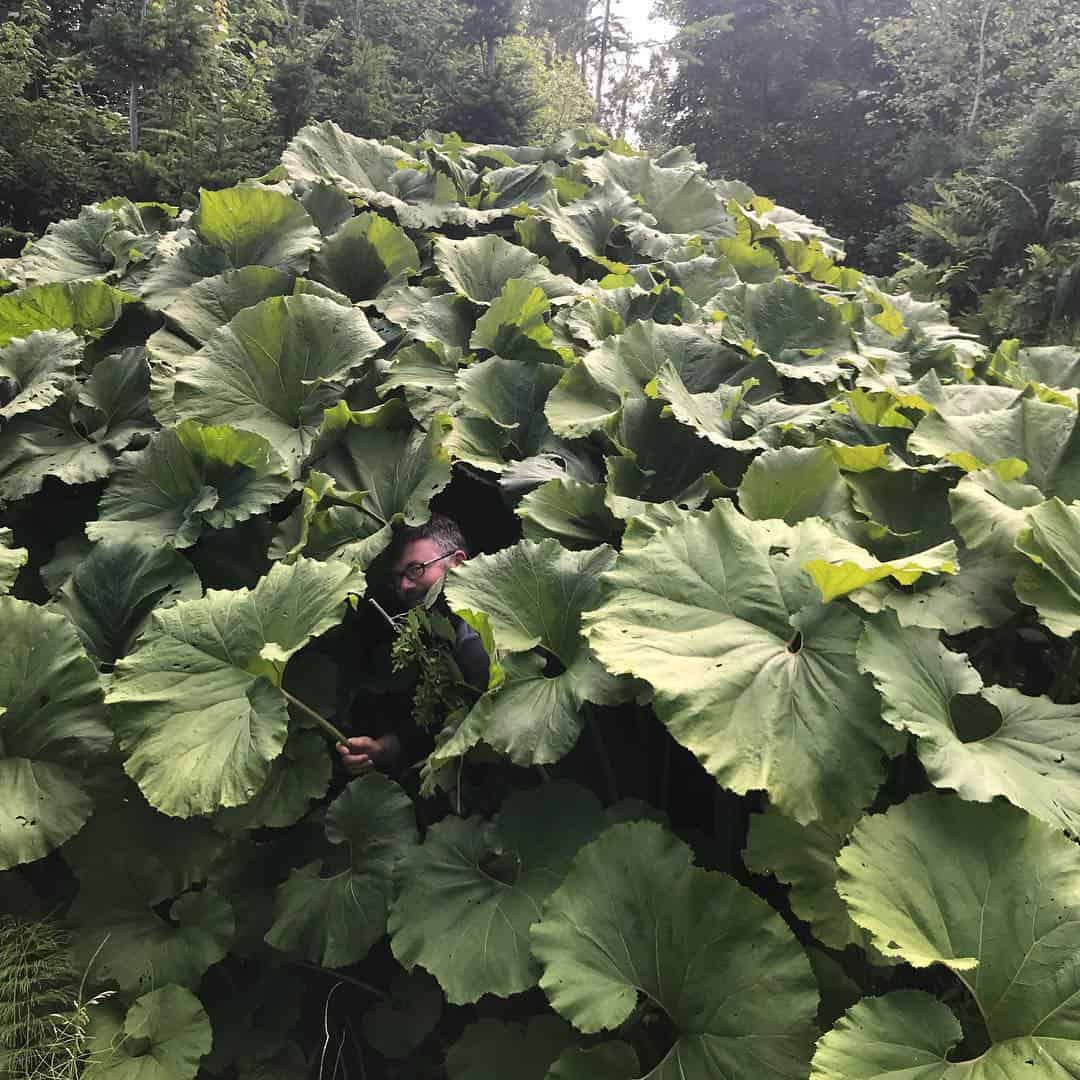
The Varieties of Butterbur worth growing:
There are three main varieties of Petasites available to US gardeners.
Petasites hybridus
Petasites hybridus (Common Butterbur) is known for its large, rhubarb-like leaves and pinkish flowers that bloom before the leaves emerge. (this plant is native to some areas of North America)
Petasites japonicus giganteus (Japanese Butterbur)
Petasites japonicus (Japanese Butterbur) features enormous leaves that can reach up to 3 feet across and produce short-lived creamy-white flowers on pale green stems in early spring. (this is what I have)
Petasites frigidus
Petasites frigidus (Western Coltsfoot and var palmatus which is known as Arctic sweet coltsfoot) has smaller leaves compared to other varieties, often found in cooler climates (even known to grow in the arctic regions). This perennial herb can grow up to 20 inches tall and has woolly-white leaves. It can be natively found in Alaska to California, Along the Atlantic Coast, particularly in northern states, and other areas around the Great Lakes and along the USA/Canada border areas. I know It can also be seen at the Santa Barbara Botanic Garden, Missouri Botanical Garden, and the Harvard University Herbariam. (but I suspect it is probably at many more public gardens -so look out for it).
Sweet coltsfoot (Petasites sagittatus) – This plant has white to pinkish-purple flowers, large horsehoof-like leaves, and a fleshy stem. It can be found in Alaska, California, Colorado, New York, South Dakota, Wisconsin, and other locations. Sweet coltsfoot is often the first wetland species to flower.
Design Ideas for Petasites japonicus
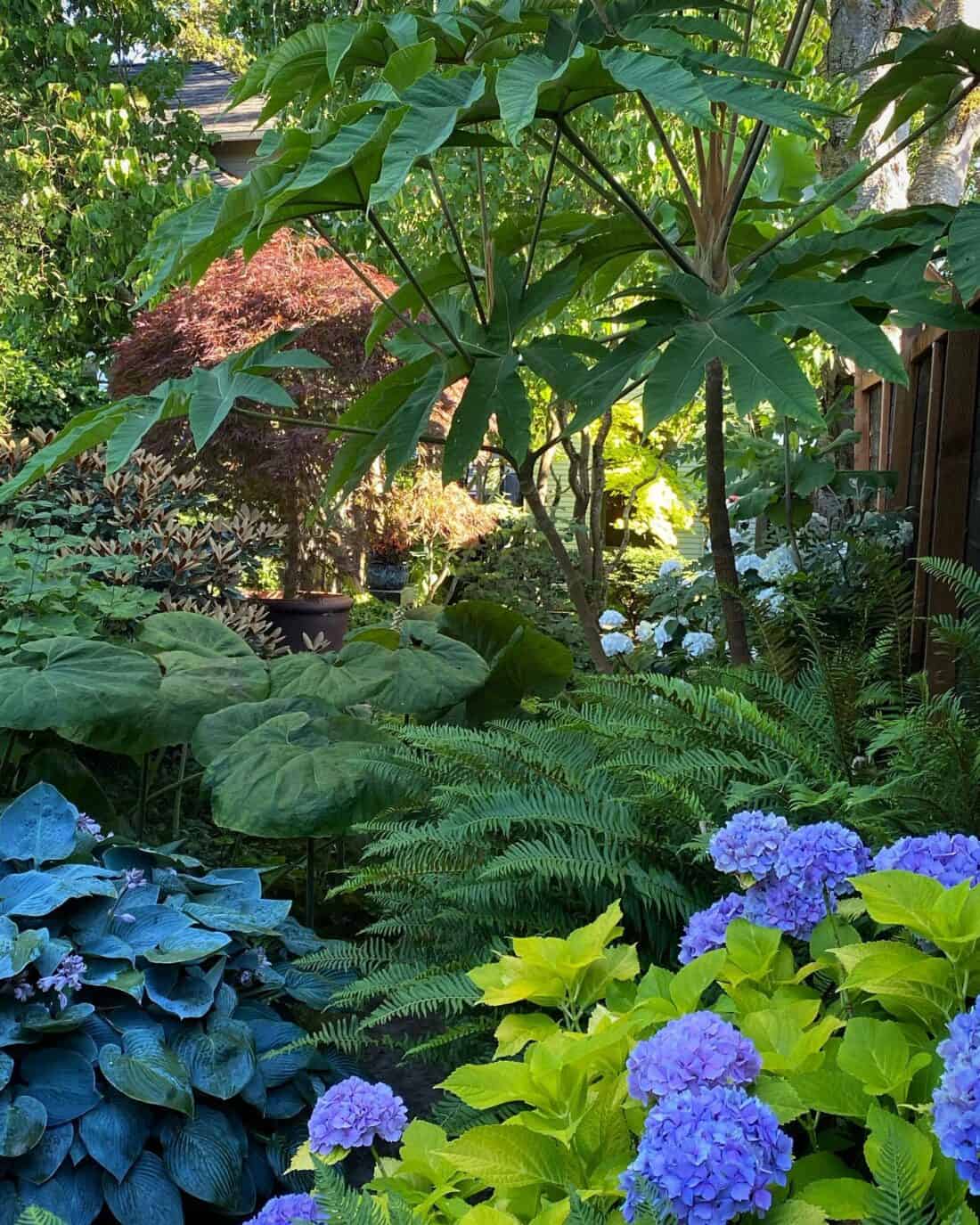
Butterbur is perfect for adding a dramatic, lush element to your garden. Here are some design ideas:
- Water Gardens and Ponds – Butterbur thrives in moist, shaded areas, making it an excellent choice for planting near water features.
- Woodland Gardens – Its large leaves create a tropical, jungle-like effect that pairs well with other shade-loving plants.
- Ground Cover – Use butterbur as a ground cover to fill large, shaded areas where other plants might struggle.
- Pair it with small-leaved plants (like boxwood) for contrast height.
Butterbur (Petasites) is not just a plant; it’s a statement piece. Just remember, with great foliage comes great responsibility—keep an eye on its spread and enjoy the dramatic impact it brings to your outdoor space.
Companion Plants
- Hosta: The broad, textured leaves of hostas complement the larger leaves of butterbur.
- Ferns: Ferns add delicate texture and contrast beautifully with the bold foliage of butterbur.
- Astilbe: The feathery plumes of astilbe provide a nice vertical accent against butterbur’s horizontal spread.
- Goat’s beard (Aruncus dioicus)- which looks a lot like astilbe – tends to be bigger and can perhaps hold its own a little better next to the size of butterbur.
- Solomon’s Seal: This plant’s arching stems and bell-shaped flowers add an elegant touch to a shady butterbur planting.
- Shapely plants (like topiary or other very pruned plants – think about how you can heighten and contrast not only leaf texture but also the dramatic shapes of the plants)
How to Grow Butterbur:
Petasites Prefers partial to full shade. It thrives in rich, moist soil. It can tolerate wet conditions, making it ideal for pond edges or consistently damp areas. The more ideal the conditions the more aggressive – so consider planting it a little outside of its favorite spot to make it a little less aggressive.
It can requires regular watering, especially during dry periods. I’ve never watered mine – if it starts to get too hot, you’ll notice the leaves start to crisp around the edges but does not hurt the plant.
Give butterbur plenty of space – a few big leaves looks silly, you will want to have a good bunch (I’d say at least 6 feet by 6 feet – but probably more is best. Consider using root barriers to control its spread. Don’t put it anywhere where you can’t control it. Monitor for invasiveness and manage accordingly.
I’ve never pruned back dead foliage in early spring (as is recommended) – it is dead and will compost quickly under the new plants. The plants are very effective at keeping weeds out of an area – starving anything beneath them for light and resources.